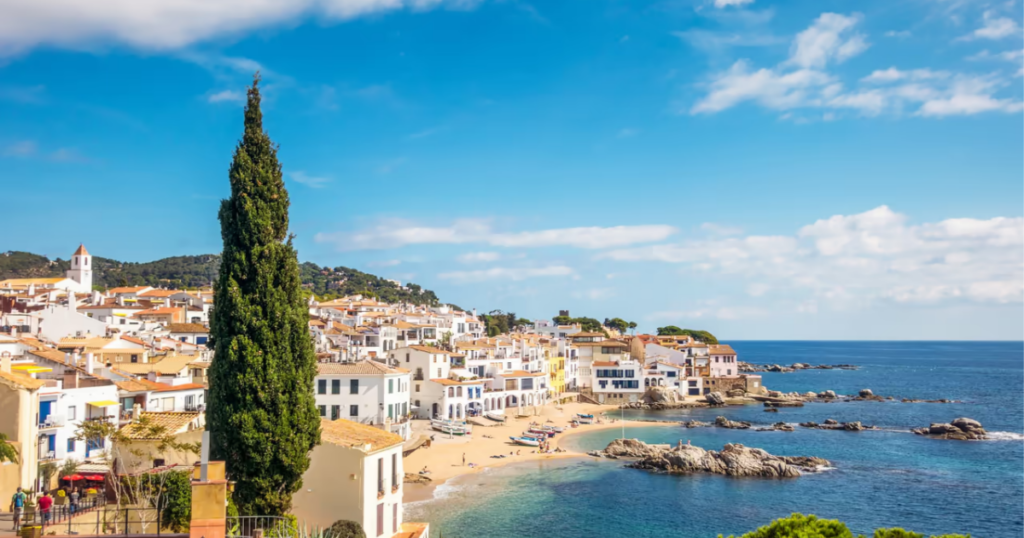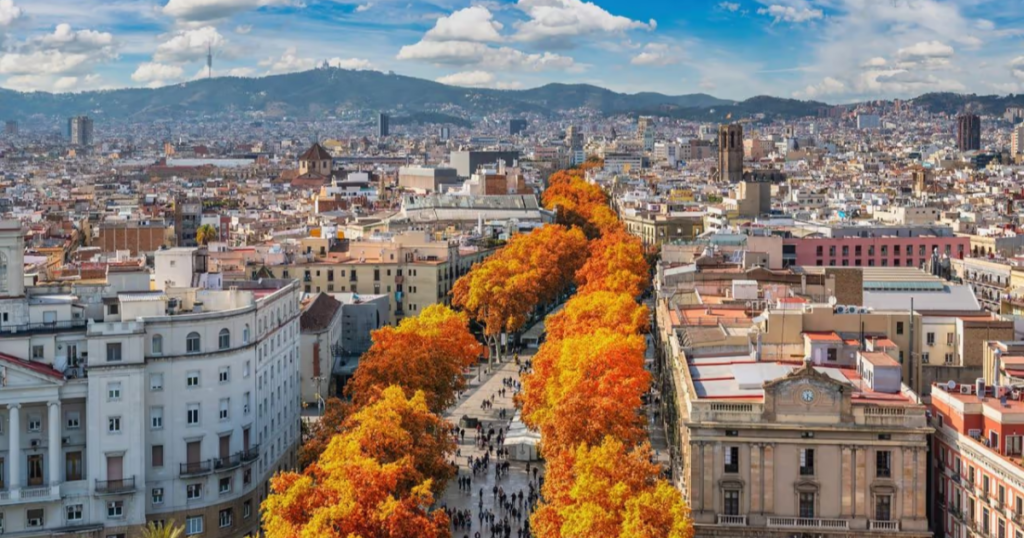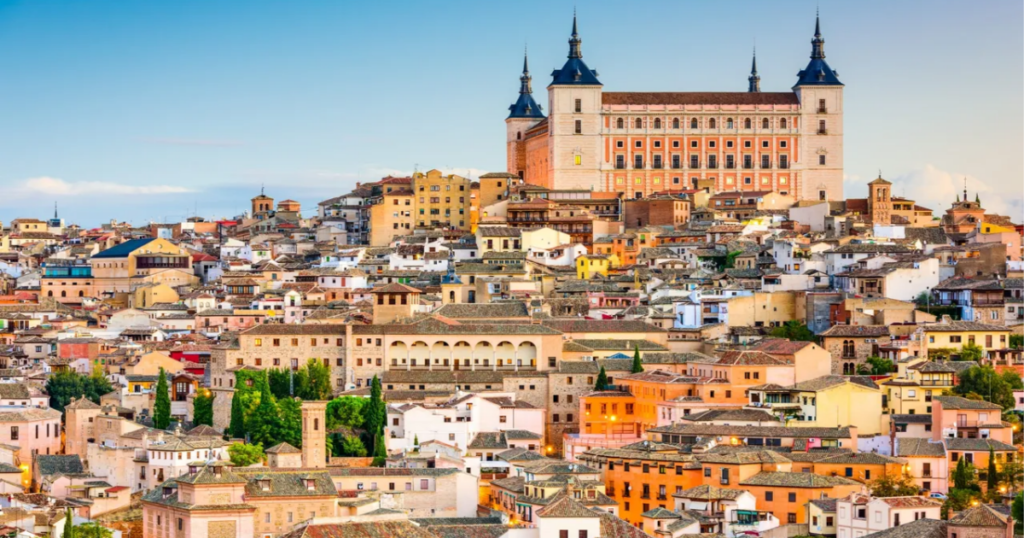Uncovering the Best of Spain: A Guide to the Top Travel Destinations and Hidden Gems
Spain is a country that is steeped in history, culture, and tradition. From its ancient Roman ruins to its Moorish architecture and rich artistic heritage, Spain is a destination that is sure to captivate and enchant you. But there is much more to this beautiful country than just its history and cultural heritage. Spain is home to some of the world’s most stunning beaches, vibrant cities, and picturesque landscapes that are sure to take your breath away. In this article, we will take you on a journey through Spain, exploring its fascinating history, delving into its unique culture and traditions, and highlighting some of the top places and landmarks that you simply must visit on your next trip to this magnificent country. So, get ready to pack your bags and join us on an unforgettable adventure through Spain!
Also Read 15 Landmarks To Visit Before You Turn 65

History Of Spain
Spain’s history dates back to prehistoric times, with evidence of human settlement dating back to the Paleolithic era. The Iberian Peninsula, which is now Spain and Portugal, was inhabited by various indigenous peoples before being conquered by the Roman Empire in the 3rd century BCE. The Romans established many cities, roads, and infrastructure that can still be seen today
After the fall of the Roman Empire, the Iberian Peninsula was invaded by various Germanic tribes, including the Visigoths. The Visigoths ruled the region until the arrival of the Moors in the 8th century CE. The Moors, who were Muslims from North Africa, quickly conquered much of the peninsula and established the Caliphate of Córdoba, which was one of the most advanced civilizations of the time.
In 1492, the Catholic Monarchs, Queen Isabella, and King Ferdinand completed the Reconquista, the conquest of the remaining Muslim territories, and established the Kingdom of Spain. During this time, Spain became a global superpower with the discovery of the New World by Christopher Columbus, the conquest of the Aztec and Inca empires, and the establishment of a vast empire across the Americas and the Philippines.
Spain’s Golden Age, the period of cultural and economic growth, began in the 16th century and lasted until the 17th century. During this time, Spanish art, literature, and culture flourished with the works of famous artists such as Diego Velázquez, El Greco, and Miguel de Cervantes.
However, Spain’s power declined in the 18th century due to economic decline, political instability, and wars with other European powers. The 19th century was a turbulent time for Spain, with numerous revolutions, coups, and the loss of its colonies in the Americas.
Spain remained neutral during World War I but suffered greatly during the Spanish Civil War, which lasted from 1936 to 1939. The Nationalist forces, led by General Francisco Franco, overthrew the democratically elected government, and Franco became the dictator of Spain. Franco’s rule lasted until his death in 1975, and Spain transitioned to democracy soon after.
Since the end of Franco’s rule, Spain has experienced rapid economic growth and modernization, becoming a member of the European Union in 1986. Today, Spain is a constitutional monarchy with a parliamentary system of government and a diverse economy that includes tourism, manufacturing, and agriculture. Spain’s rich history and culture continue to attract millions of visitors from around the world each year.

Spain’s Culture And Tradition
Spain’s culture and traditions are a unique blend of influences from various civilizations that have inhabited the Iberian Peninsula over the centuries. Spanish culture is characterized by its art, music, food, architecture, and religious traditions.
One of the most recognizable aspects of Spanish culture is its flamboyant and passionate flamenco dance, which is often accompanied by live music played on guitar, singing, and clapping. The dance is characterized by its expressive movements, colorful costumes, and rhythmic footwork.
Another hallmark of Spanish culture is its cuisine, which is diverse and flavorful. Spain is famous for its tapas, small dishes of various appetizers and snacks, as well as its paella, a rice-based dish with saffron and seafood or meat. Spanish cuisine is also known for its use of fresh ingredients, olive oil, and wine.
Spain’s architecture is another significant aspect of its culture, with stunning examples of Gothic, Renaissance, Baroque, and Modernist styles. One of the most famous examples of Spanish architecture is the Sagrada Familia in Barcelona, a massive basilica designed by the renowned architect Antoni Gaudí.
Spain’s religious traditions also play an essential role in its culture, with the country being predominantly Catholic. Many of Spain’s festivals and celebrations are religious in nature, including Holy Week, a solemn procession of floats and sculptures depicting the passion of Christ, and La Tomatina, a massive tomato fight that takes place in the town of Buñol each August.
Bullfighting, while controversial, is also part of Spanish culture and tradition. The spectacle, known as corrida de toros, is a traditional spectacle in which a matador fights a bull in a ring, often to the death.
Overall, Spain’s culture and traditions are rich and diverse, reflecting the country’s complex history and its influence on the world. From its art and music to its cuisine and architecture, Spain continues to be a vibrant and fascinating country with much to offer visitors and residents alike.
Table of Contents
Follow us on Youtube
Follow us on Facebook
Follow us on Twitter
Follow us on Instagram

Also Read 15 Landmarks To Visit Before You Turn 65
Top Places To Visit In Spain
Spain is a beautiful country with a rich history, diverse culture, and stunning landscapes. Here are some of the top places and landmarks to visit in Spain:
1) Barcelona – This vibrant city in Catalonia is famous for its stunning architecture, including the works of Antoni Gaudí such as the Sagrada Familia and Park Güell.
2) Madrid – Spain’s capital city is home to some of the country’s most important museums, including the Prado Museum and the Reina Sofia Museum, which houses the famous Guernica painting by Pablo Picasso.
3) Seville – This city in Andalusia is known for its beautiful architecture, including the Alcazar palace and the Gothic Seville Cathedral, which houses the tomb of Christopher Columbus.
4) Granada – The city of Granada in Andalusia is home to the stunning Alhambra Palace, a UNESCO World Heritage Site that showcases intricate Islamic architecture and beautiful gardens.
5) Valencia – This coastal city is famous for its futuristic City of Arts and Sciences, a complex of buildings designed by Santiago Calatrava that houses an opera house, a planetarium, and an interactive museum.
6) Santiago de Compostela – The capital of Galicia is famous for being the endpoint of the Camino de Santiago pilgrimage route and its beautiful Romanesque and Baroque architecture.
7) Costa Brava – This picturesque stretch of coastline in northeastern Spain is known for its beautiful beaches, coves, and clear blue waters.
8) La Rioja – This region in northern Spain is famous for its wine production and vineyards, as well as its charming medieval villages.
9) The Pyrenees – This mountain range forms the natural border between Spain and France and is known for its stunning landscapes, hiking trails, and ski resorts.
10) Canary Islands – These Spanish islands off the coast of Africa offer a tropical paradise with beautiful beaches, stunning volcanic landscapes, and unique flora and fauna.
These are just some of the top places and landmarks to visit in Spain, but the country has much more to offer, from charming small towns to rugged mountains and everything in between.
Do Let Us Know Whether This Post Was Of any Help to you and Also Let us know if you would want us to write a post on any other country as well.

